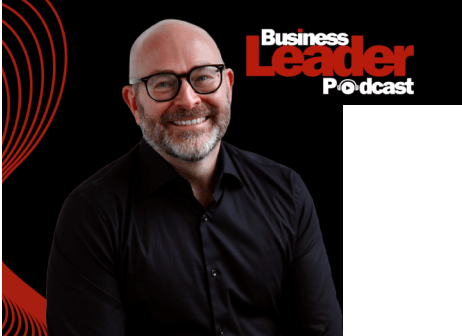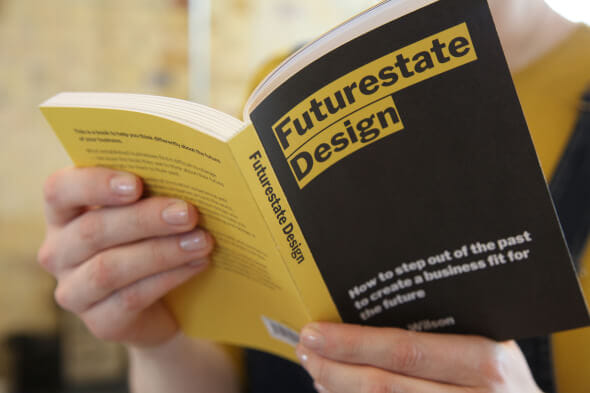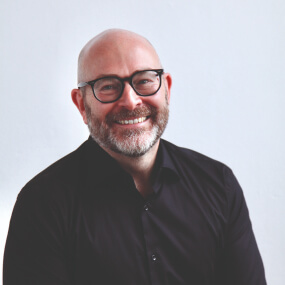Futurestate Design
How to step out of the past to create a business fit for the future
Buy the book on Amazon

Preparing businesses
for the future
Listen to the interview with Mark on
The Business Leader Podcast
This is a book to help you think differently about the future of your business.
Most established businesses find it difficult to change – because the tools they use to think about their future unknowingly tie them to their past.
Based on two decades of innovation experience with hundreds of established companies around the world, business innovation specialist Mark Wilson brings you Futurestate Design, outlining the techniques to help you break away from traditional business thinking and design a business fit for the future.
You’ll be surprised by what’s holding you back and excited to get started on imagining what your future should look like.
Think of it as the equivalent of bringing a prototype back from the future so that everyone can see what they’re working towards.
Mark Wilson
Want to buy copies for your whole team? Buy directly from us with a discount: booksales@wilsonfletcher.com
Gallery



Kind words
Traditional advice on insurance transformation puts far too much weight on fixing today’s issues, and as a consequence, anchors thinking in the past and risks dragging technical and design debt into an organisation’s future. The result is often incremental change, at best. Wilson Fletcher, in stark contrast, advocate an original, bold and refreshing future-first approach. Their tools and techniques help prime an organisation’s mindset to work collectively in order to envisage a truly aspirational yet achievable future state. The result for Pacific Life Re was bold, engaging, inspirational and tangible vision of what our organisation is aiming to become.

About the author
Mark Wilson is CEO at Wilson Fletcher, a London-based business innovation consultancy. Over the last 20 years, Mark and his team have gained unique insights into challenges of driving tranformative change in established organisations from their work with leading companies around the world.
You can find Mark on LinkedIn, or at the bar.